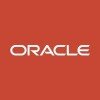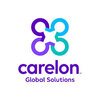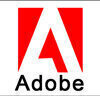Filter interviews by
Sparkle Software Solutions System Analyst Interview Questions and Answers
Sparkle Software Solutions System Analyst Interview Experiences
2 interviews found

(1 Question)
- Q1. Roles and responsibility , oops features , current project workflow , architecture, spring MVC , hibernate.
Interview Preparation Tips

(1 Question)
- Q1. Opps features, spring MVC, hibernate, sql, spring batch
Interview Preparation Tips
Top trending discussions






Interview questions from similar companies

I applied via Recruitment Consultant and was interviewed before Jul 2020. There were 3 interview rounds.
Interview Questionnaire
2 Questions
- Q1. Explain agile ceremonies.
- Ans.
Agile ceremonies are regular meetings held by agile teams to plan, review, and improve their work.
Sprint planning: a meeting to plan the work for the upcoming sprint
Daily stand-up: a brief meeting to discuss progress and plan for the day
Sprint review: a meeting to review the work completed during the sprint
Sprint retrospective: a meeting to reflect on the sprint and identify areas for improvement
Backlog refinement: a m...
- Q2. Situatiinal based
Interview Preparation Tips
Skills evaluated in this interview

Analyst Interview Questions & Answers
Automatic Data Processing (ADP)posted on 3 Oct 2021
I applied via Recruitment Consultant and was interviewed before Oct 2020. There were 4 interview rounds.
Interview Questionnaire
2 Questions
- Q1. How important is for you to celebrate Christmas?
- Ans. Basically here they wanted to know if you would be flexible enough to work on Christmas day. The reason because December happens to be a crucial month for year end and the workload is overwhelming. So the crux of the question is you only get one day leave for Christmas I.e Christmas day else you are asked to work. It may happen that your leaves are not approved at all the rest of the days depending on the situation. Ha
- Q2. How often have you been given negative feedback?
Interview Preparation Tips

Business Analyst Interview Questions & Answers
Microsoft Corporationposted on 10 May 2021
I applied via Monster and was interviewed in Nov 2020. There were 4 interview rounds.
Interview Questionnaire
2 Questions
- Q1. Where do I work?
- Q2. What is my salary?
Interview Preparation Tips

I applied via Naukri.com
Interview Questionnaire
2 Questions
- Q1. Spring, Arraylist and linked list , problem solving
- Q2. Find a word in 2 d matrix , palindrome or not
- Ans.
A program to find a palindrome word in a 2D matrix of strings.
Iterate through each row and column of the matrix
Check if each string is a palindrome using two pointers approach
Return the first palindrome word found
Interview Preparation Tips
Skills evaluated in this interview

I applied via Naukri.com and was interviewed before Jan 2021. There was 1 interview round.
Interview Questionnaire
2 Questions
- Q1. Explain urself
- Ans.
I am a detail-oriented business analyst with strong analytical skills and experience in data analysis and project management.
Experienced in conducting market research and identifying business opportunities
Skilled in data analysis and visualization using tools like Excel and Tableau
Proficient in project management methodologies like Agile and Waterfall
Strong communication and interpersonal skills for effective collabora...
- Q2. I explained
Interview Preparation Tips

Interview Questionnaire
1 Question
- Q1. What is your greatest achievement elaborate

Analyst Interview Questions & Answers
Automatic Data Processing (ADP)posted on 22 Aug 2021
I applied via Referral and was interviewed before Aug 2020. There were 5 interview rounds.
Interview Preparation Tips

Interview Questionnaire
2 Questions
- Q1. How would you increase the sales of newspaper in your locality?
- Ans.
To increase newspaper sales in the locality, I would focus on improving content, distribution, and marketing strategies.
Conduct market research to understand readers' preferences and interests
Create engaging and informative content that caters to the local audience
Offer attractive subscription packages and discounts to encourage regular readership
Partner with local businesses and events to increase visibility and distr...
- Q2. What new feature you would like to add in Google maps and how would it help to increase the company's revenue?
- Ans.
I would like to add a feature that suggests nearby events and attractions based on user preferences.
Personalized event and attraction recommendations
Integration with ticketing platforms for revenue sharing
Increased user engagement and retention
Interview Preparation Tips
Experience: In the written test they asked questions from logical and quantitative aptitude, verbal reasoning and few questions from core topics.
Round: HR Interview
Experience: This was followed by different rounds of interviews. The HR questions were mainly about me, my strengths and weaknesses and why do I want to join the company and where do I see myself in the next five years or so. Loads of guesstimate questions like estimate number of autos in Delhi and other similar cases.
College Name: LADY SHRI RAM COLLEGE
Sparkle Software Solutions Interview FAQs
Tell us how to improve this page.
Interview Questions for Popular Designations
- System Engineer Interview Questions
- System Administrator Interview Questions
- Senior Systems Engineer Interview Questions
- Assistant System Engineer Interview Questions
- Associate Systems Engineer Interview Questions
- System Engineer Hardware Interview Questions
- Linux System Administrator Interview Questions
- Senior System Administrator Interview Questions
- Show more
Interview Questions from Similar Companies
|
Software Developer
9
salaries
| ₹2.5 L/yr - ₹10.5 L/yr |
|
Java Developer
7
salaries
| ₹3 L/yr - ₹4.8 L/yr |
|
Executive Accountant
5
salaries
| ₹4 L/yr - ₹6.5 L/yr |
|
Manager
4
salaries
| ₹13.5 L/yr - ₹18 L/yr |
|
Assistant Manager
4
salaries
| ₹6.2 L/yr - ₹8.2 L/yr |

Oracle

Amdocs

Carelon Global Solutions

Automatic Data Processing (ADP)
- Home >
- Interviews >
- Sparkle Software Solutions Interview Questions >
- Sparkle Software Solutions System Analyst Interview Questions









